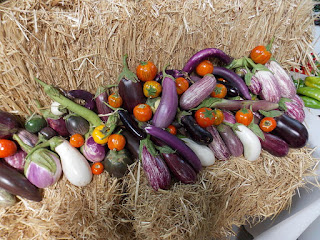People like poultry for its tenderness, delicate flavor, less fat than mammals' meat has, relatively short time of cooking, and diversity of cooking methods applicable to this type of meat. We fry it and bake, and boil to make broth and stew with vegetables, finally, we stuff chicken and make stuffing from chicken. One of the first dishes of second phase was Chicken Cordon Bleu, but for beginning we learned proper way to butcher chicken.
I have experienced processing chicken from dispatching the bird to serving on the table, yet I've learned a bunch of information and skills how to cut a peace people will pay for. One of those fancy cuts, I can do now, is chicken airline breast, or chicken supreme.
How I can cook supreme, I'm looking forward to learn later, but this class was about boneless chicken breast stuffed with ham and cheese, breaded and deep fried. Chicken Cordon Bleu. From the beginning it looked like we were going to cook individually, but then cooking became a process shared by all. It was... challenge. I do not know about everybody, but I didn't complete all steps of cooking this dish even though I watched and understood all of them. It's why I decided to cook Chicken Cordon Bleu for my husband for dinner and Kiev Chicken for me as well. The beginning of the process is same for both of them, so I put skinned boneless filets between of plastic wrap layers and pounded them with meat mallet.
After that, both breasts I seasoned with salt and pepper and the one for Cordon Bleu I sprinkled with parsley, while Kiev Chicken I dusted with dill. To make the first one I put seasoned breast on the new piece of plastic wrap and laid on a top few thin slices of ham and swiss cheese. I also added some grated Grier, I just can't help it - I'm a really cheesy person.
Then I tightly rolled the chicken in wrap and put it in the refrigerator minimum for 15 minutes.
The same process is used for Kiev Chicken but the stuffing is the frozen dill butter.
Meanwhile, I made orzo with garlic and cherry tomatoes, and, off course, cheese. I heated minced garlic with olive oil in a saute pan until it became light gold color and added chopped cherry tomatoes; sauteed them until beautifully reduced
Then I added al dente pasta well drained and reheated it with grated Grier. Don't ask me about proportions in making this side - all to taste and for individual preferences.
That time my chicken was ready to be breaded and fried, so I started this process.
One of the very useful things our Chef taught us was to use two hands in breading process, so one stays dry and another is wet. In the picture above you can see the order of breading: flour, egg wash (eggs with little bit of milk), and bread crumbs. Because I don't like to fry anything until a dark color, I fried my chicken about 5 minutes and then I put them in an oven preheated to 350*F for 5 minutes more. Even though my chickens had same side, I served them differently. Chicken Cordon Bleu I plate with Hollandaise sauce and garnished with parsley.
Chicken Kiev doesn't require sause due to a bunch of own juice and melted butter inside, so I cutted it and finished with baby arugula.

















































